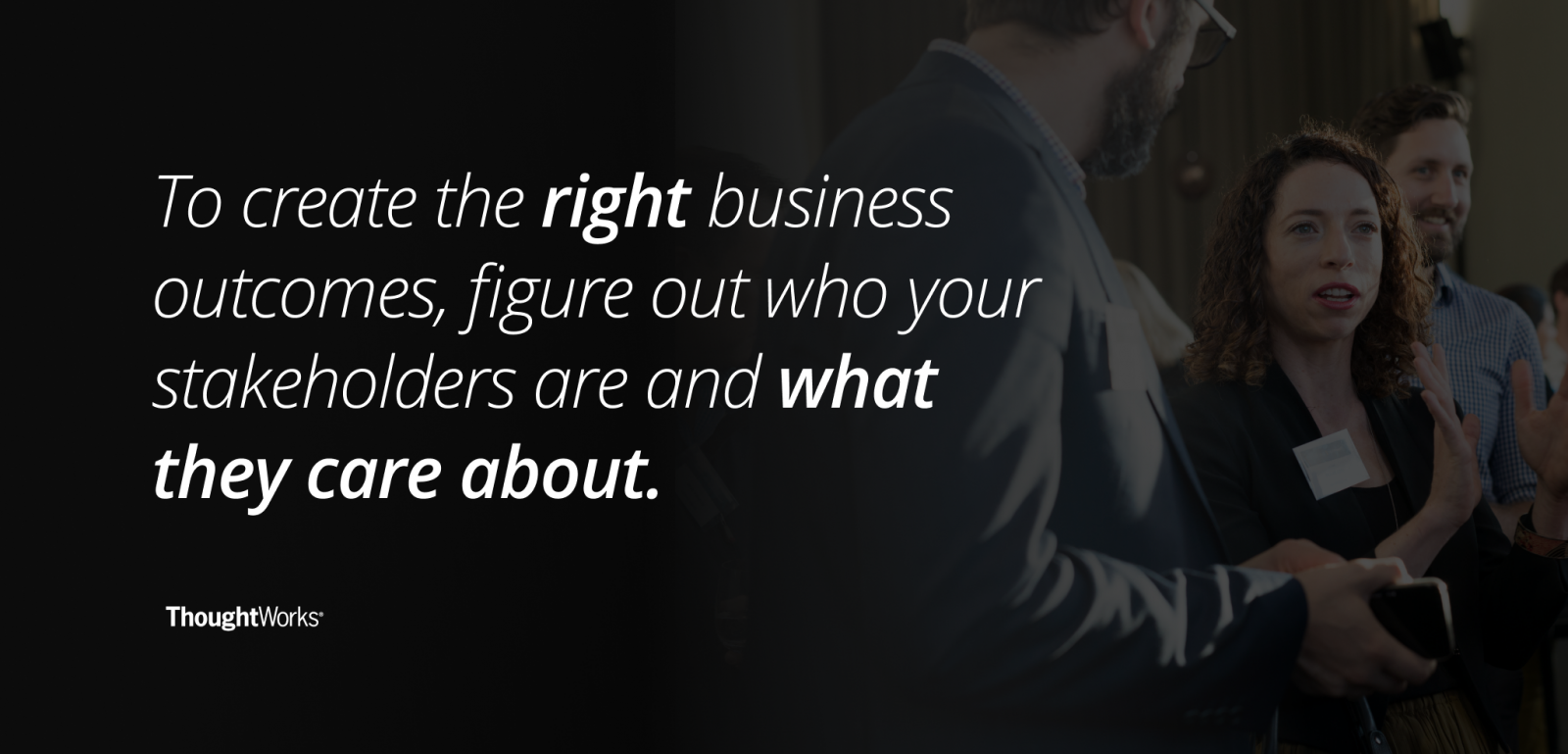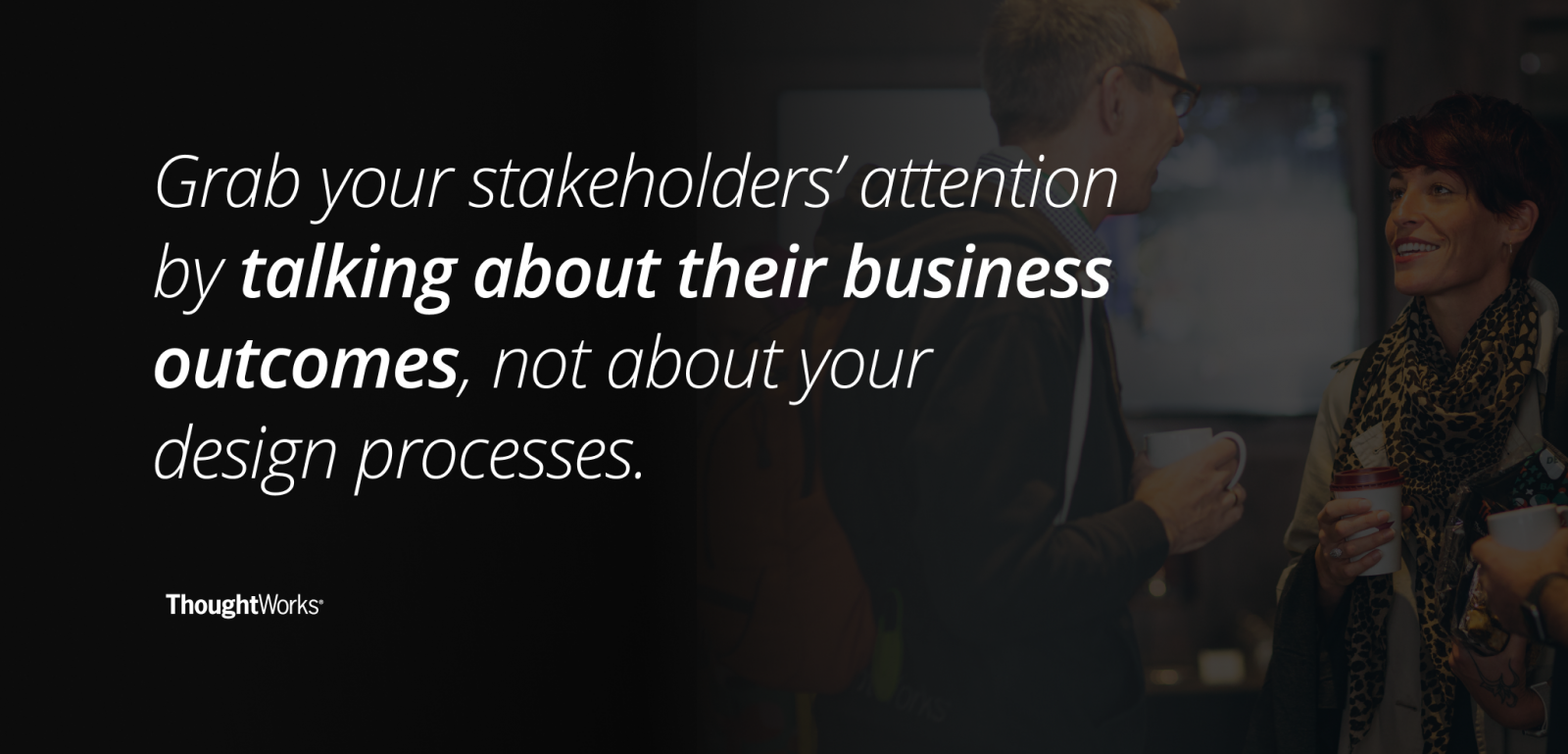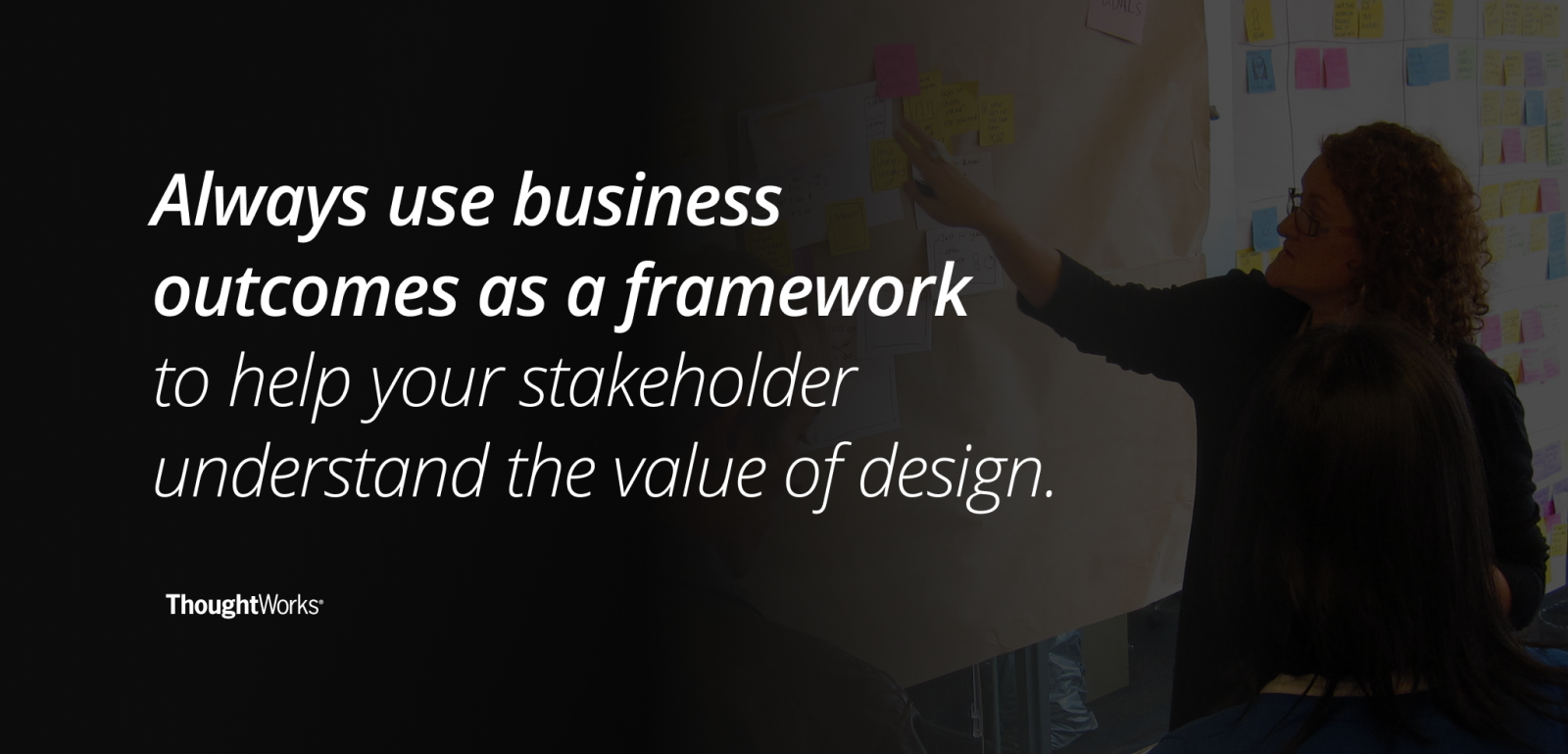
Businesses don’t care for design: they care for business outcome
Humans are goal-oriented
Our everyday lives are filled with goals. Some are bigger (I want to have a beautiful house, I want to be the next Richard Branson), some are smaller (I need to file my tax, I need to set a reminder for my mum’s birthday), and some are frivolous (I want to have a sexier looking phone than my peers, I would like some fun game to play).We have a lot of post-its, lists, and reminders around us, that help us to keep these goals in mind. Humans need purpose and setting up goals is a way to achieve that. In both our personal and professional lives, having goals helps to drive us and keep us motivated.
Designers talk about the process, not the goal

When we talk about design to our stakeholders we tend to talk about why design is important and we describe what processes we will undertake. Very rarely we talk about how design is going to help them to achieve their business goals (the outcome of design).Here are some examples I hear very often:
- “Design creates intuitive user journeys.”
- “Design can deliver a delightful experience.”
- “We need to research to come up with a valuable feature.”
- “A Design Thinking workshop is necessary to define the core problem.”
Understand what they care for and show them that you understand their goals
We, designers, understand human needs very well. It is a significant part of our job to research and analyse human behaviour and then design accordingly. We create personas, make sure we understand their demographics, their motivations, the language they use and their triggers.For some reason, we completely forget about our ‘empathetic’ skill set when it comes to our stakeholders. Very rarely we create and study ‘stakeholder persona’. How many designers go to the stakeholder and ask them ‘What do you care for?”
The ability to promote design should be nothing unfamiliar to designers. First, you need to understand audience needs (understand what outcome is needed, what does the person value, what they care for) and then leverage on that knowledge and speak their language (avoid using the word ‘design’ and design jargon, instead, focus on the outcome).
Understand your audience
“To prove value, know what your audience values.”
Go and do your homework. Find out who your stakeholder is, who you are promoting the importance of design to, and figure out what they care for. What drives them and what do they see as a success. Are you talking to executives, marketing people, developers, salespeople, recruiters?
There is a lot of talk about design being involved at the executive level, there is also a lot of evidence that this can be beneficial to business, but only if a designer can bring value to the table.
Speak their language
When it comes to promoting design, you need to take the ‘stakeholders persona’ and find a way to communicate with them and frame it so they understand. Of course, it depends on your ‘stakeholder persona’, but just as an example see these:
Design-oriented: “A Design Thinking workshop is necessary to define the core problem.”
Business-oriented: “We are exposing ourselves to very high risk because these requirements are based on an assumption.”
Design-oriented: “Design creates intuitive user journeys.”
Business-oriented: “If we minimise the barrier to purchase for the shopper, your sales will go up.”
Design-oriented: “We will deliver a delightful experience to your customers.”
Business-oriented: “We will deliver increased engagement measured by improved customer loyalty.”
Here are some key points on how to speak their language:
-
Avoid using the word ‘design’. Everyone has a different understanding of what design is, so how can you explain a definition while using the word that you are trying to define? Instead…
-
Focus on the outcome. Make sure they see that you understand what they care for and that you share the same business goal.
-
Use the same vocabulary. It is a human cognitive bias that we perceive familiar things better. Leverage on it and stop being hung up on your definitions.
-
Avoid design jargon, and speak business. Your objective is to communicate the value of design, not to look important or more knowledgeable than them. Focus on the outcome.
If you want to promote design, learn how to frame it

By no means, am I saying that the outcome is more important than the process of getting there. The process is where we learn and grow as an individual or even societies. But the reality is that humans are hard-wired to think in terms of goals and outcomes and if you follow this natural human behaviour and start a conversation with an outcome, you will be able to promote design more effectively. Maybe you might even get enough interest that you can take them along on a journey of a design process and they can learn with you.
Disclaimer: The statements and opinions expressed in this article are those of the author(s) and do not necessarily reflect the positions of Thoughtworks.



















